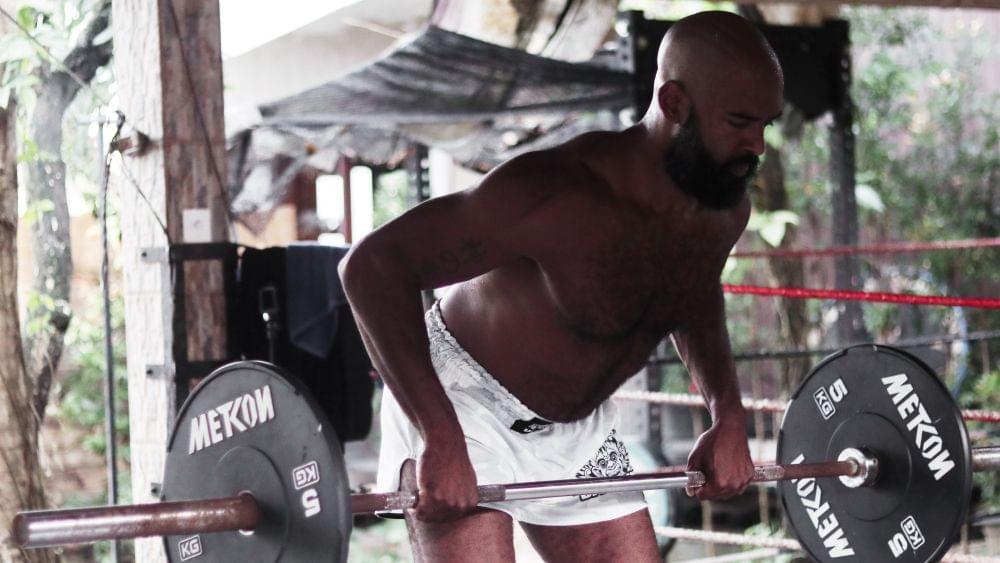Power is a cornerstone of every effective fighter. It fuels explosive strikes, solid clinch control, and the ability to impose your rhythm inside the ring. But how do fighters build that kind of power? Two of the most common approaches are calisthenics and weight training, each with its own benefits, limitations, and timing.
This article breaks down how both methods contribute to fight performance, what fighters at different levels actually use, and how to structure your strength training in a way that supports long-term progression.
What Calisthenics Really Offers Fighters

Calisthenics is all about using your own body weight to build strength, control, and endurance. Movements like push-ups, pull-ups, dips, and squats help develop full-body coordination and build strength in ways that directly support striking, defense, and movement in the ring.
For beginners, calisthenics is an excellent way to build a strong foundation. It improves joint stability, builds muscle without overloading your frame, and teaches you how to move your body efficiently. Even simple moves like push-ups and planks help reinforce the core and upper-body strength needed for punches, while bodyweight squats and lunges improve leg drive for kicks and footwork.
More experienced fighters still use calisthenics to maintain mobility and conditioning. These movements can be done anywhere, require little to no equipment, and are great for keeping your body sharp between heavier training sessions.
What Weights Bring to the Table

Weight training adds an extra layer to strength development by introducing external resistance. This allows fighters to train for raw power, build muscle in key areas, and address specific weaknesses. Exercises like deadlifts, squats, and overhead presses develop the kind of strength that supports explosive strikes and helps absorb impact during clinch work or takedowns.
As fighters progress, weight training becomes more useful. It allows for more targeted improvements, whether that’s building stronger hips for kicks, reinforcing shoulder stability, or increasing core strength for better rotation and balance.
It’s important to lift with purpose. A poorly designed weight program can lead to unnecessary fatigue or stiffness. But when done right, it enhances athleticism without slowing you down.
Which One Improves Explosiveness More?
Explosiveness is your ability to generate force quickly, and both calisthenics and weights can help you improve it, depending on how you train.
Weight training is ideal for developing raw power. Movements like jump squats, power cleans, and kettlebell swings train your fast-twitch muscle fibers to fire more efficiently, which directly supports knockout-level force.
Calisthenics builds explosive control through high-speed bodyweight movements like clap push-ups, jumping lunges, and box jumps. These help improve reaction time and movement precision, especially useful for fast transitions and counterattacks in the ring.
In most cases, a combination of both methods delivers the best results. Strength gives you the foundation, and speed-focused drills teach you how to apply it quickly and effectively.
When to Use Each Method
The effectiveness of calisthenics or weight training isn’t just about the method—it’s about timing. Knowing when to use each one can help you maximize gains, reduce injury risk, and align your strength training with your fight preparation.
Beginners: Build Body Awareness and Control

If you're just starting out, calisthenics should be your primary focus. These movements teach you how to move your body efficiently, activate the right muscles, and control your balance and posture. Before adding an external load, it’s essential to master your own bodyweight. This builds a strong foundation and significantly lowers your risk of injury.
At this stage, exercises like push-ups, planks, air squats, lunges, and pull-ups will give you more than enough resistance to develop strength. Once you can perform these with good form, you’ll be better prepared to take on more intense training.
Intermediate Fighters: Combine Strength with Stability
After you've built a solid foundation, it’s time to integrate weights alongside your bodyweight work. At the intermediate level, you’re often looking to improve explosive strength, address minor imbalances, and sustain high output during longer sessions.
This is where you can begin adding compound lifts like kettlebell swings, deadlifts, and front squats, while still keeping calisthenics in rotation. For example, use calisthenics in warm-ups or finishers, and place heavier lifts at the start of your workout. This approach balances raw strength development with fluid movement and endurance.
Advanced Fighters: Train with Intent and Cycle Your Focus

For experienced fighters, both methods should be used strategically depending on the training phase. During strength-building cycles (often off-season or far from competition), weights take priority. This is when you push for higher loads and develop maximum power with exercises like cleans, squats, or loaded jumps.
As you get closer to a fight, your focus should shift. Calisthenics become more valuable during fight camp for maintaining strength without overtaxing the nervous system. They also improve movement efficiency and help maintain agility during tapering phases.
At this stage, recovery becomes just as important as output. Fighters often combine lighter strength training with mobility work and techniques that support joint health. For many, adding structured breathwork or restorative movement sessions keeps the body sharp while preventing burnout.
There’s no single answer to which method is better. Both calisthenics and weights offer unique benefits, and the most successful fighters learn to use them at the right times. Calisthenics builds control and endurance, while weights add raw strength and explosiveness.
The key is knowing when to lean into each, depending on your level, your goals, and where you are in your training cycle.
Want to train smarter and get stronger the right way? Come train with us at Ubud Muay Thai, where every program is built with fighters in mind, from beginners to pros.

